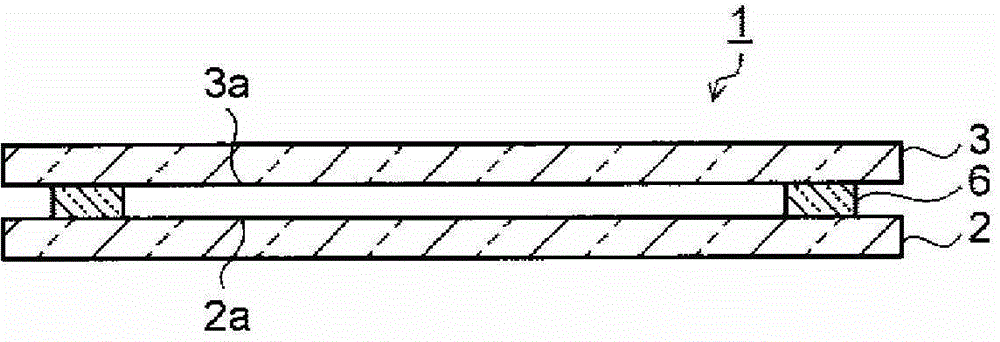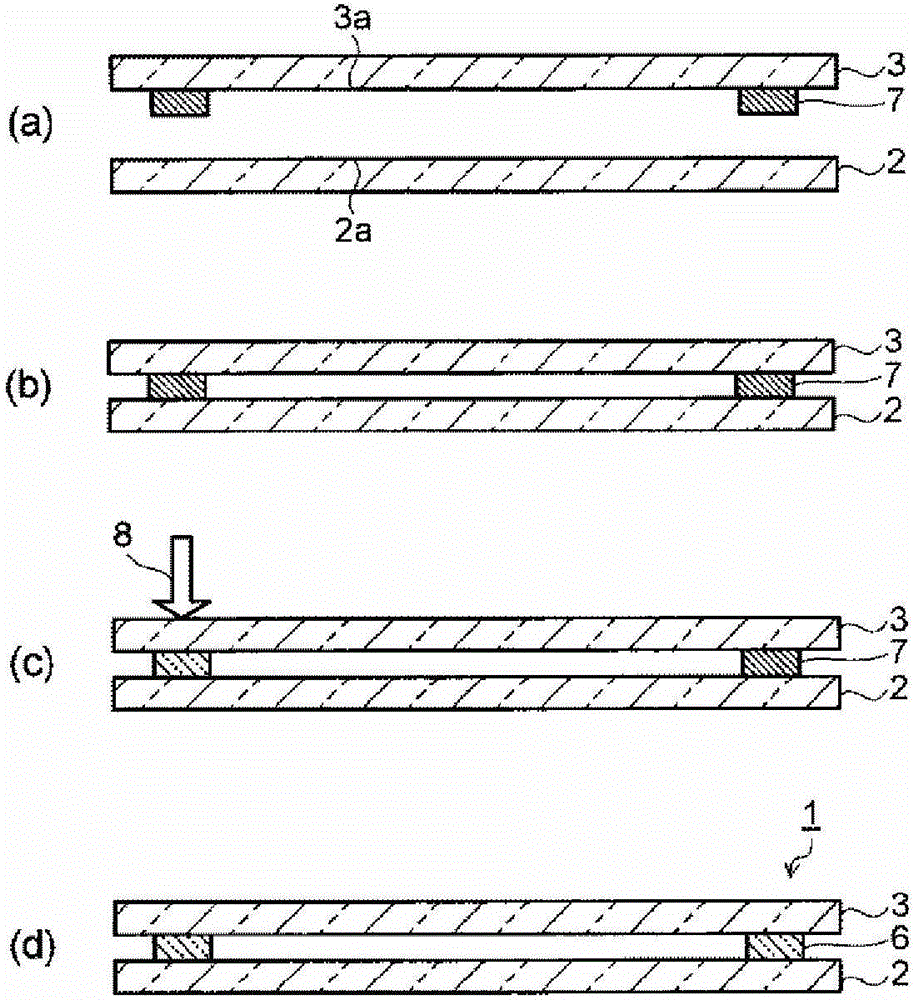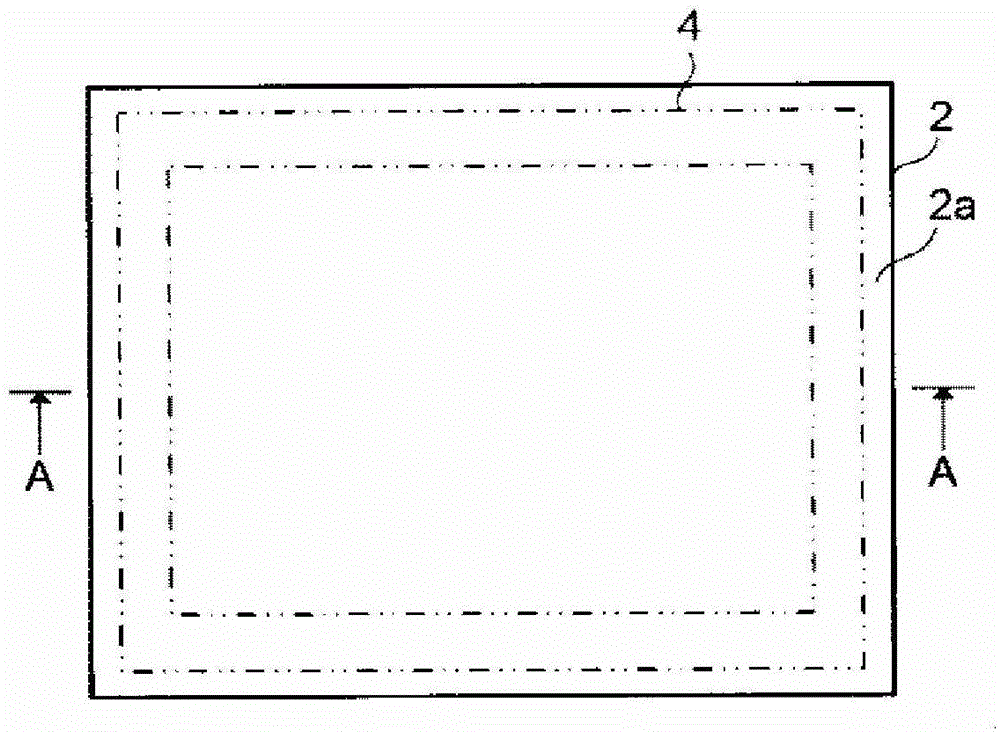Electronic device
A technology for electronic devices and electronic components, applied in electrical components, instruments, circuits, etc., can solve the problem that the content of particles with small particle size is not considered, the bonding strength and bonding reliability of the glass substrate and the sealing layer are easily reduced, and the sealing Problems such as reduced material flow
- Summary
- Abstract
- Description
- Claims
- Application Information
AI Technical Summary
Problems solved by technology
Method used
Image
Examples
preparation example Construction
[0066] As the carrier used in the preparation of the sealing material paste, methyl cellulose, ethyl cellulose, carboxymethyl cellulose, ethoxy cellulose, benzyl cellulose, propyl cellulose, nitrocellulose Base cellulose and other resins dissolved in solvents such as terpineol, butyl carbitol acetate, ethyl carbitol acetate and other solvents, or methyl (meth)acrylate, (meth)acrylic acid Acrylic resins such as ethyl ester, butyl (meth)acrylate, and 2-hydroxyethyl methacrylate are dissolved in methyl ethyl ketone, terpineol, butyl carbitol acetate, ethyl carbitol A carrier obtained from a solvent such as acetate.
[0067] The viscosity of the sealing material paste can be adjusted by the ratio of the resin (binder component) to the solvent or the ratio of the sealing material to the carrier, as long as it is suitable for the apparatus for applying it to the glass substrate 3 . Additives known in the glass paste field, such as a solvent for dilution, an antifoaming agent, or a ...
Embodiment 1
[0077] The following materials are prepared: having Bi 2 o 3 83%, B 2 o 3 5%, ZnO 11%, Al 2 o 3 Bismuth-based glass frit with a composition of 1% (softening point: 410°C, thermal expansion coefficient: 106×10 -7 / °C); as a low-expansion filling material, the average particle size (D50) is 4.3 μm and the specific surface area is 1.6m 2 / g of cordierite powder; a compound comprising Fe, Mn, and Cu (specifically, having an oxide-converted mass ratio of Fe 2 o 3 16.0%, MnO 43.0%, CuO 27.3%, Al 2 o 3 8.5%, SiO 2 5.2% composition), with an average particle size (D50) of 1.2 μm and a specific surface area of 6.1 m 2 / g of laser absorbing material.
[0078] The particle size distribution of the cordierite powder was measured with a particle size analyzer (manufactured by Nikkiso Co., Ltd. (Nikkiso Co., Ltd., MICROTRAC HRA). The measurement conditions are set as: measurement mode: HRA-FRA mode; particle transparency: yes; spherical particle: no; particle refractive ...
Embodiment 2
[0090] In addition to being used as a low-expansion filler material with an average particle size (D50) of 2.6 μm and a specific surface area of 4.5 m 2 Formation of the sealing material layer and sealing of the first glass substrate and the second glass substrate by laser were carried out in the same manner as in Example 1 except for the cordierite powder per g. The temperature of the sealing material layer during laser irradiation was 620° C. as in Example 1. As a result of observing the state of the electronic device having the glass panel produced in this way, no cracks or cracks were observed in the glass substrate and sealing layer, and it was confirmed that the sealing was good. In addition, cross-sectional observation and image analysis of the sealing layer were carried out in the same manner as in Example 1, and the fluidity hindrance value was 1.26 μm -1 , the thermal expansion value is 74×10 -7 / °C.
PUM
| Property | Measurement | Unit |
|---|---|---|
| thickness | aaaaa | aaaaa |
| specific surface area | aaaaa | aaaaa |
| particle diameter | aaaaa | aaaaa |
Abstract
Description
Claims
Application Information
 Login to View More
Login to View More - R&D
- Intellectual Property
- Life Sciences
- Materials
- Tech Scout
- Unparalleled Data Quality
- Higher Quality Content
- 60% Fewer Hallucinations
Browse by: Latest US Patents, China's latest patents, Technical Efficacy Thesaurus, Application Domain, Technology Topic, Popular Technical Reports.
© 2025 PatSnap. All rights reserved.Legal|Privacy policy|Modern Slavery Act Transparency Statement|Sitemap|About US| Contact US: help@patsnap.com



